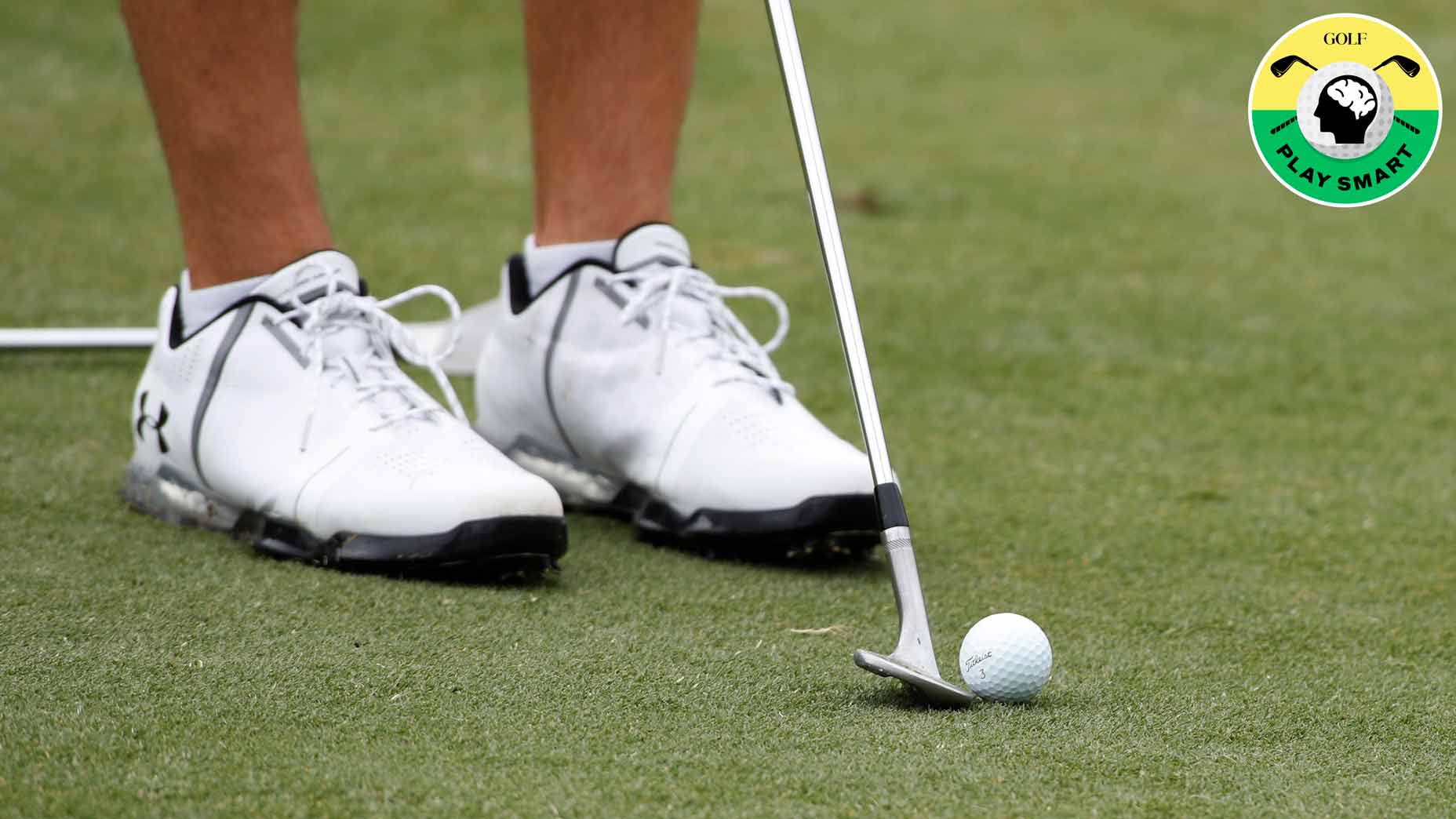The bump and run is one of the most adored shots in golf because it’s easy to hit and reliable from most greenside lies. And with the right setup keys, you can master this trusted chip and leave yourself inside a makeable distance every time.
Follow along with these six steps from Parker McLachlin, a GOLF Top 100 Teacher to Watch, to perfect the bump and run, and dial in your short game.
Start by grabbing a low-lofted club, like a 7-iron. This will produce a lower launching shot that rolls like a putt and is easy to control.
“We’re going allow the lack of loft on this club to do the work for us,” McLachlin says.
Step 1: Get close to the ball
As you set your feet, narrow your stance and get closer to the ball. Your feet should be a few inches apart and about six to ten inches from the ball, like McLachlin demonstrates in the video above.
How far golfers *really* hit their drives, according to dataBy: Zephyr Melton
Step 2: Raise the handle
Raising the handle of the club allows you to get more vertical or upright at address. McLachlin explains that this is key to creating solid contact because it helps you utilize the toe, allowing the club to glide the club through the turf rather than having the heel catch or dig.
Step 3: Take your putting grip
For this shot, McLachlin says to choke down on the grip, almost to the steel, and use your putting grip. This clever adjustment tricks your brain into thinking about the shot as a stroke and not a hit.
“I don’t want to be hitting this ball, I want to be stroking it,” McLachlin says.
Step 4: Neutral ball position
One of the most important setup keys for a bump and run is proper ball position. If your ball position drifts too far back, you’ll deloft the club and dig it into the ground, producing a shot with little to no height on it. Which is why you might occasionally stub or thin these greenside shots.
Instead, McLachlin says to play the ball between the middle of your stance and your trail toe. A great way to find your optimal ball position is to take a few practice swings and see where your club naturally bottoms out.
Rory McIlroy uses this training aid. Here’s how it can help youBy: Maddi MacClurg
Step 5: Rock your shoulders
“We’re going to make this a ‘shoulder stroke’, not a ‘hands stroke’,” McLachlin says.
To do that, McLachlin says to rock your shoulders back and through, like you would on a putt. This helps you harness big muscles, creating a smooth, fluid stroke. Once you nail that shoulder rocking motion, focus on keeping your lower body quiet. Then put it all together.
Step 6: Pick your landing spot
Knowing where to land your shot is essential for the bump-and-run. And according to McLachlin, the ball should ideally land one or two paces onto the green. This allows your shot to roll like a putt, which McLachlin says gives you the best chance of leaving it close—or even holing out.












